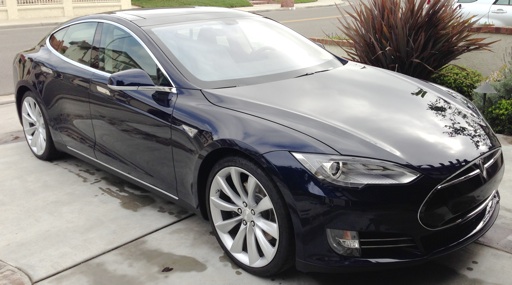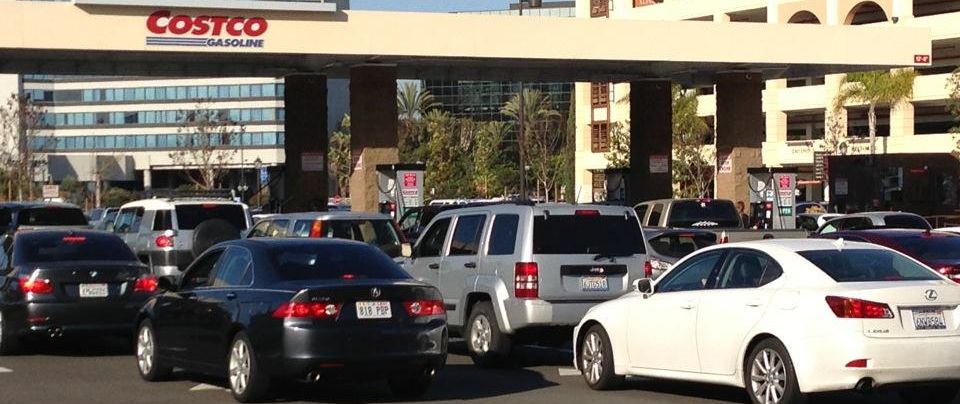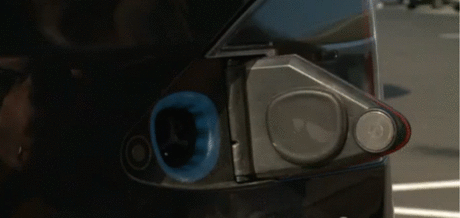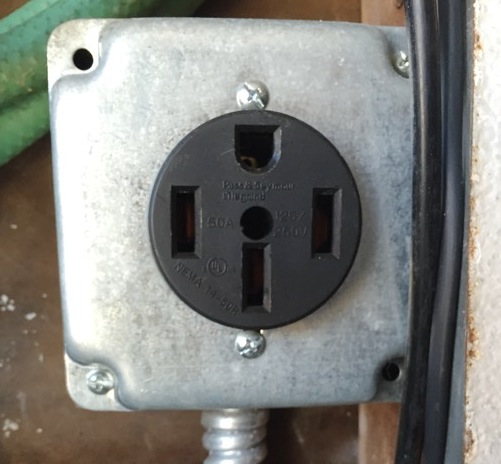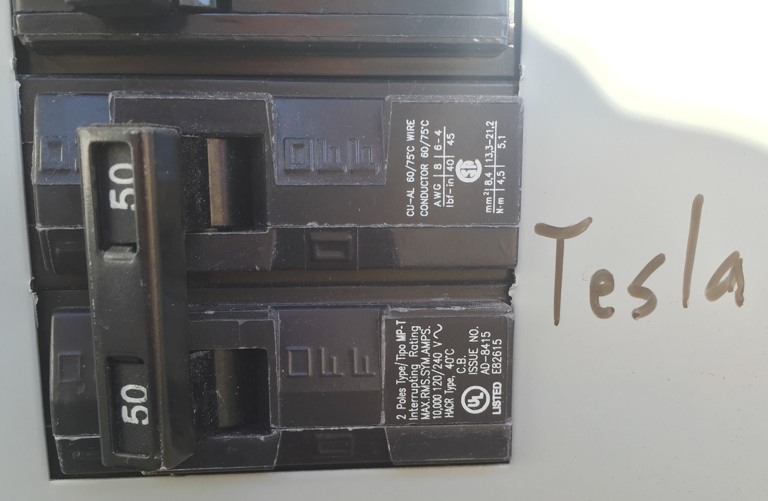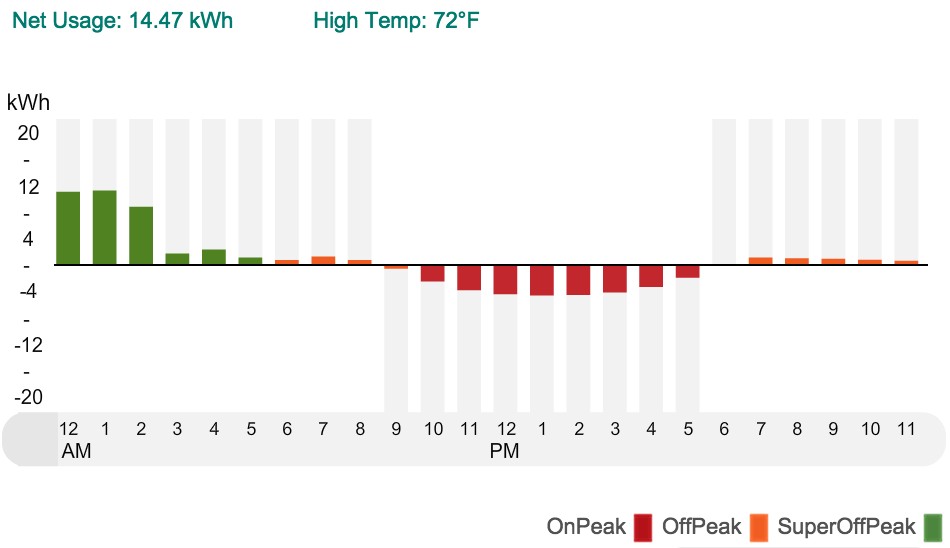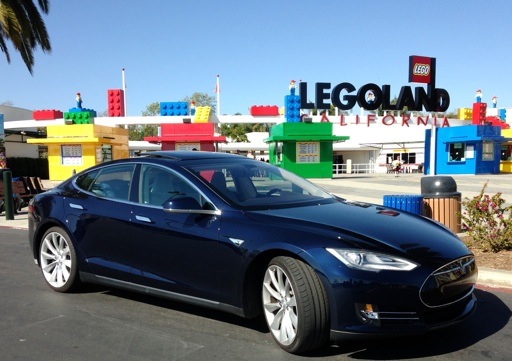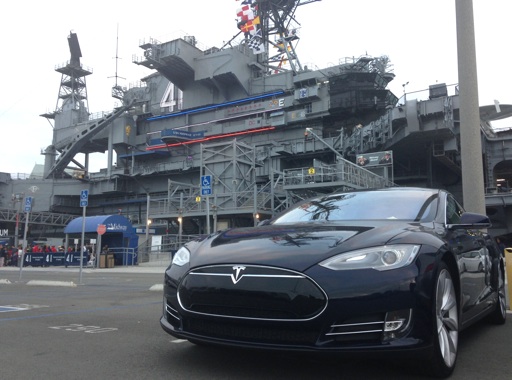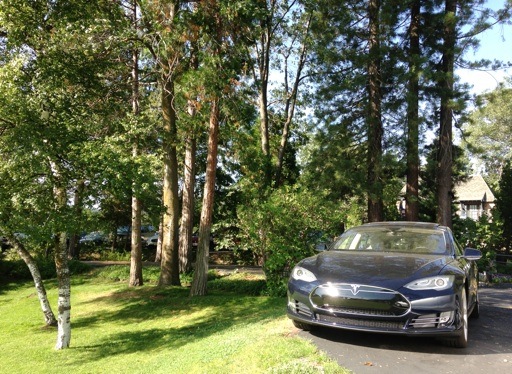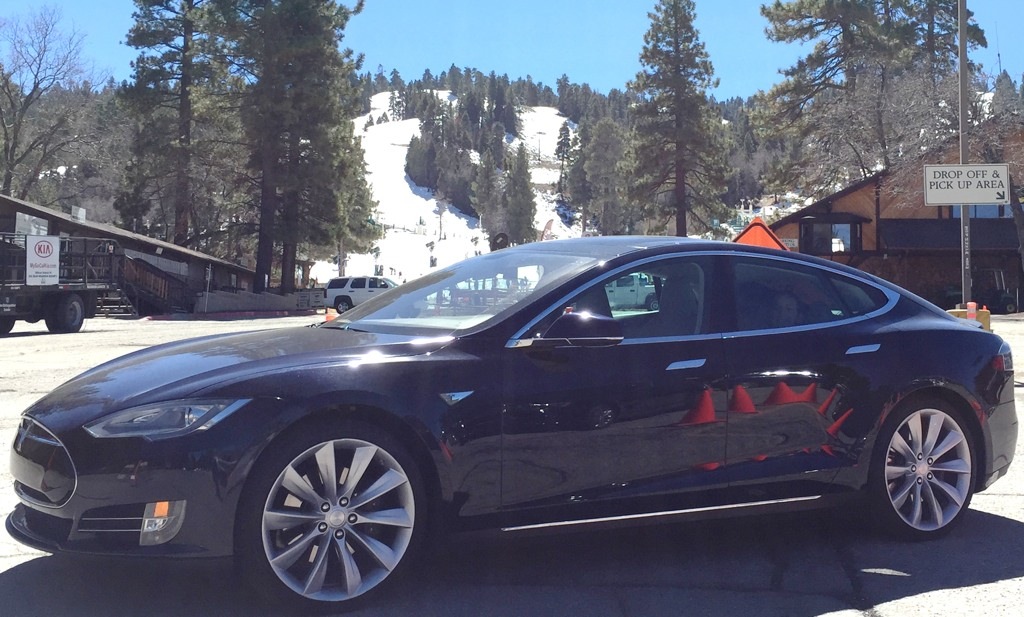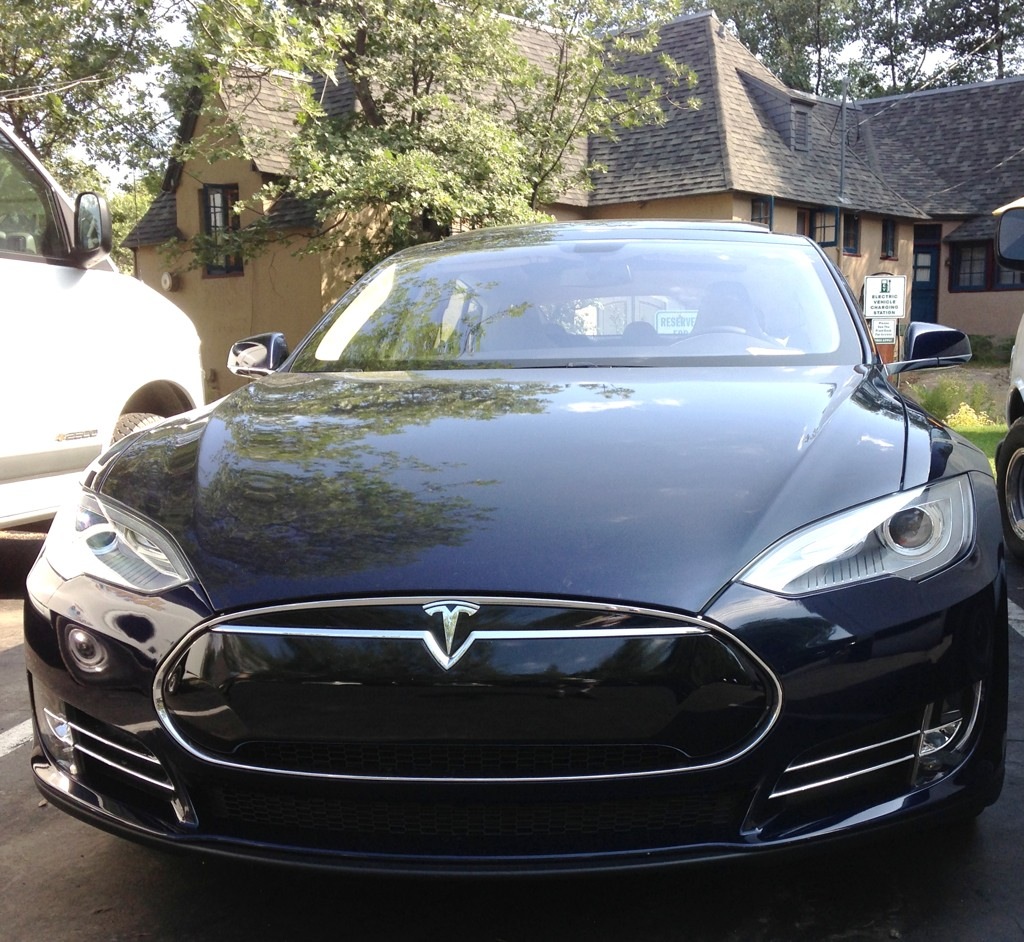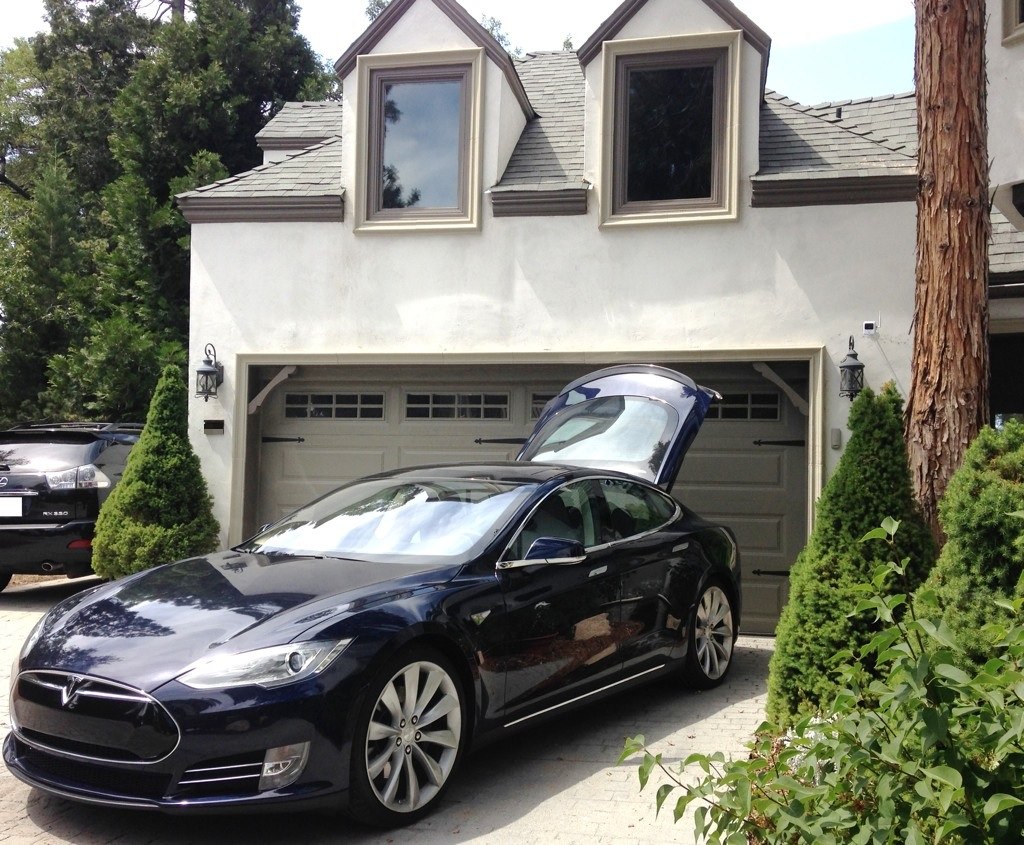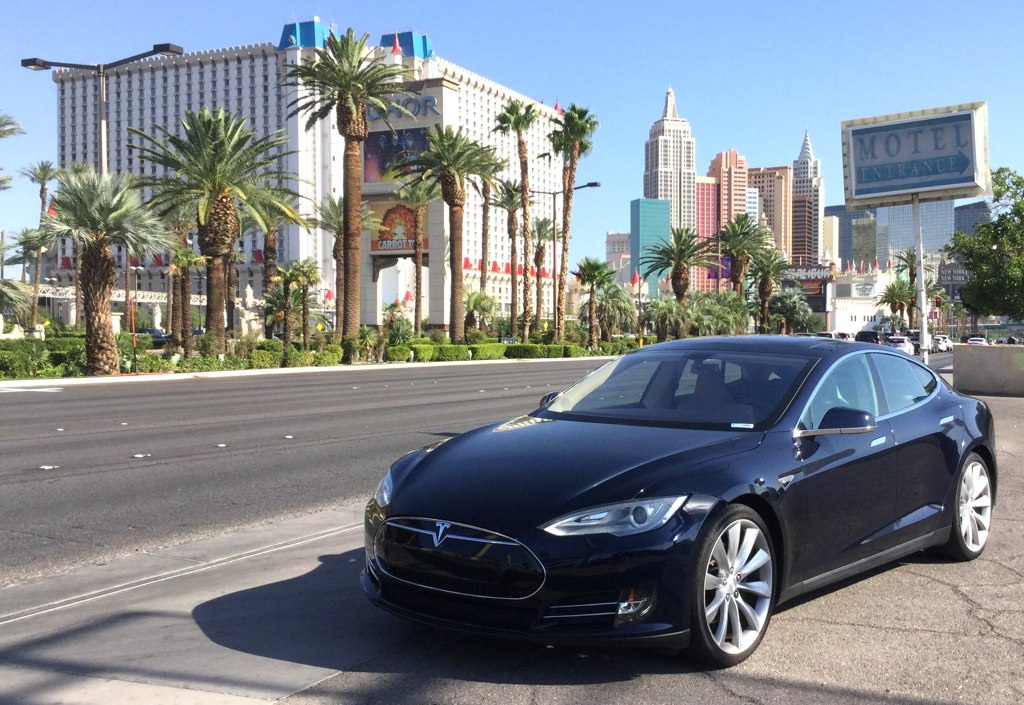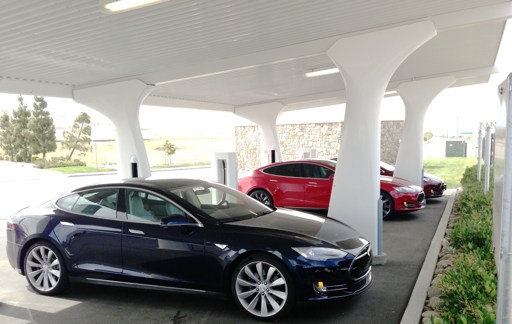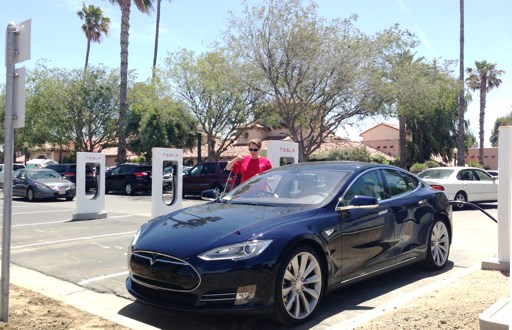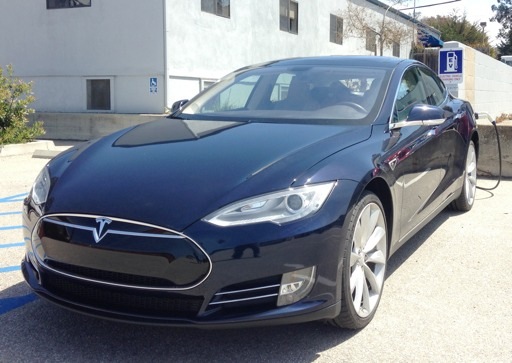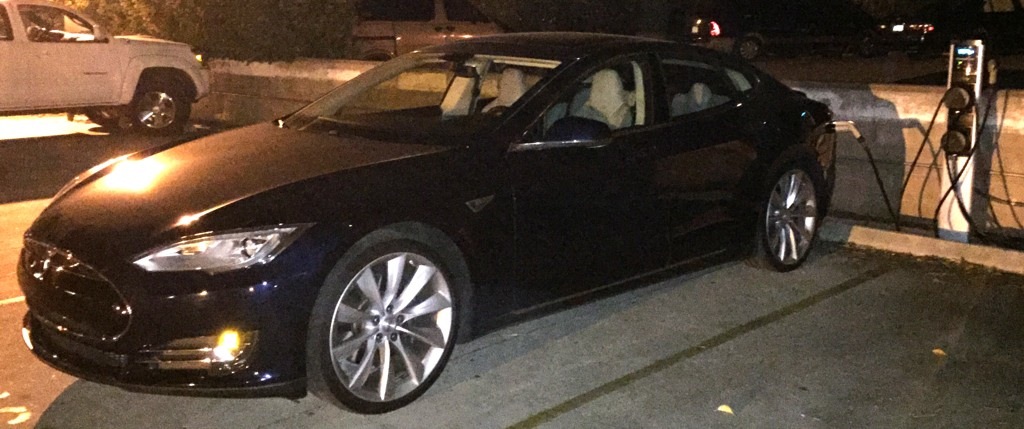| Tesla Model S - Charging |

|
| Updated daily, the above shows where I charge my Model S, counting the total number of days at each location type. Most charging occurs either at Home (green) or at Destinations (yellow) where I drive and stay overnight. When travel calls for a Tesla Supercharger, that day is in the red column. Likewise for Public charging stations in blue. |
|
Charging the Model S
When I started driving an electric car I felt liberated because I realized a vehicle doesn't have to act like how a gas car does. I asked myself: I felt like my brain was being flipped around. After two years of using my electric car, I can tell you this is how we fuel the car of the future. Overnight destination charging is just like charging at home except it isn't at home, just like charging a smartphone away from home. Therefore charging at the same place where I'm sleeping occurs % of the year. Conversely, refueling while awake and away from sleeping quarters (the gas-car refueling method 100% of the time) occurs about % of the year. Charging an electric car is not only practical but also saves me time hence is far more convenient than refueling any gas car. Saves time: Each week, fueling my (old) gas car about took me 30-40 minutes, including driving, waiting, and paying time. Each week today, charging takes 20-30 seconds of my time. Convenient: Imagine going miles to the laundromat to do your laundry for decades, then one day you start using your own washer and dryer at home. It's kinda like that. Real-world Charging of the Model S Let's take a closer look at the illustration of how much of the time I charge my electric car with each method. This should put things in perspective.
Do I really need to talk about what happens only % of the year? Now it seems so trivial by comparison.
Dean E. Dauger holds a Ph. D. in physics from UCLA, where his group created the first Mac cluster in 1998. Dr. Dauger is the award-winning author in multiple American Institute of Physics' Software Contests and co-authored the original, award-winning Kai's Power Tools image-processing package for Adobe Photoshop. After founding his company, Dauger Research, Inc., its debut product, Pooch, derived from Dr. Dauger's experience using clusters for his physics research, was soon awarded as "most innovative" by IEEE Cluster and continues to revolutionize parallel computing and clusters worldwide with its patented technology.
|
|||||||||||||||
Thanks for having a look!
|
Copyright © 2015-20 Dean Dauger. Huntington Beach Boy Scouts Troop 555 Idyllwillow Manager |

|
|
